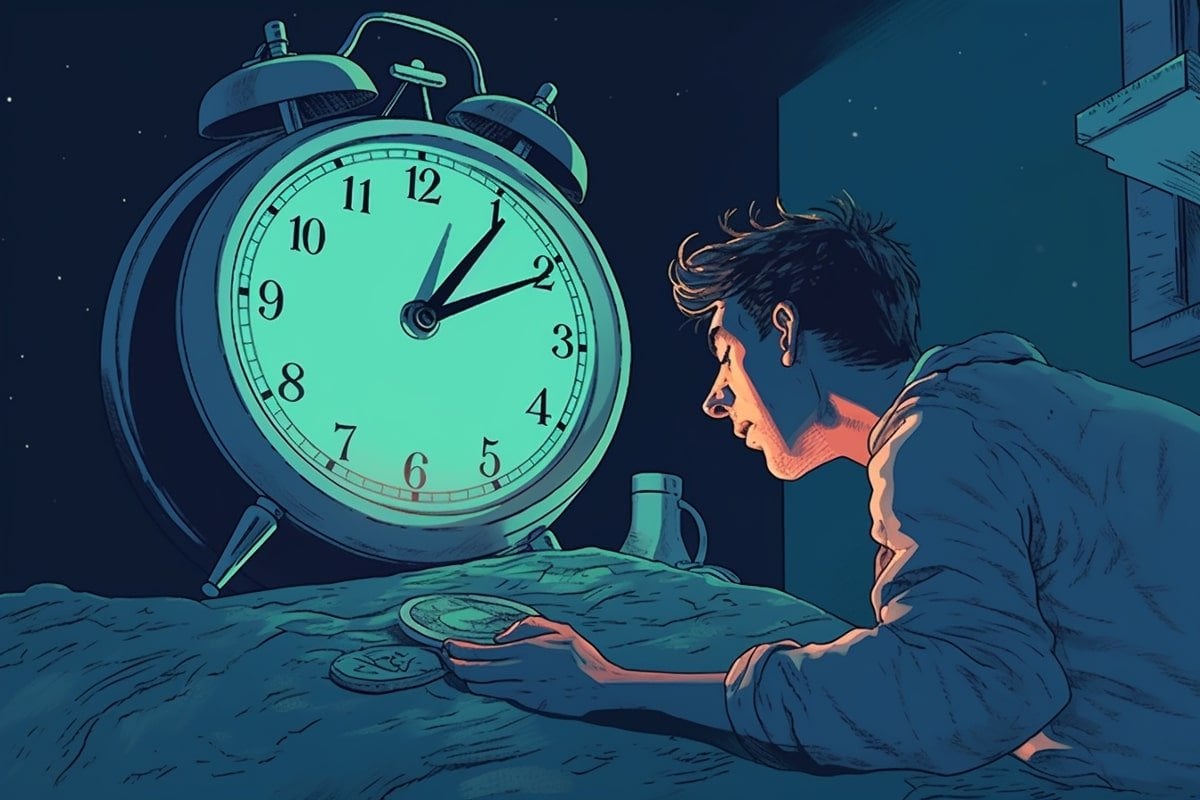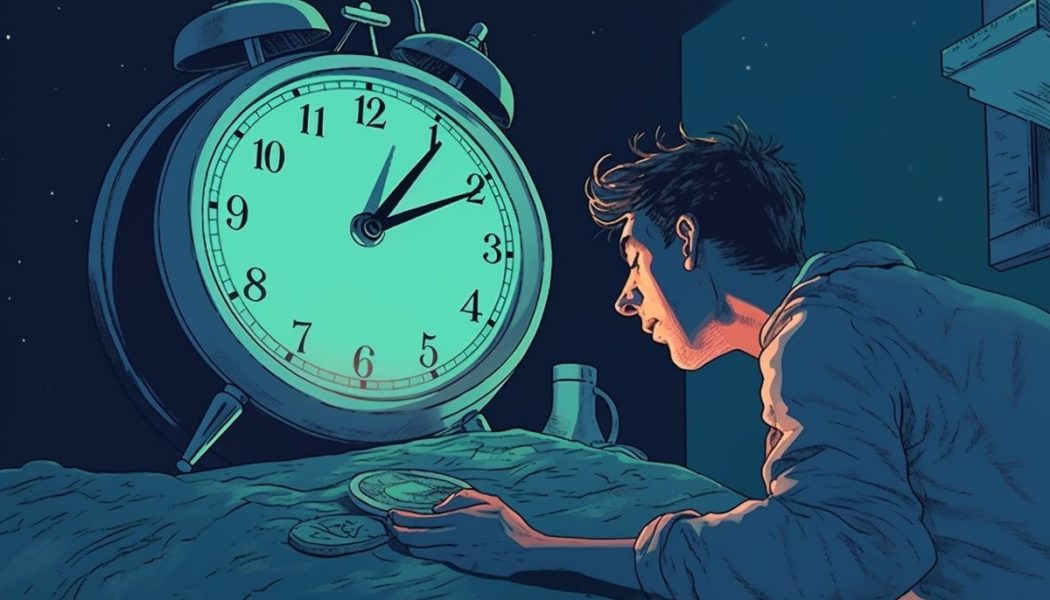Summary: Recent research refutes the idea that ‘night owls’ face a shorter lifespan due to their late-night tendencies, emphasizing lifestyle factors like smoking and drinking as the more significant contributors.
The study involved almost 23,000 twins from Finland, tracked over a period of 37 years. It found that while evening types have a slightly increased risk of mortality, it is more attributable to unhealthy habits than sleep patterns.
The researchers highlight the importance of considering lifestyle when examining health impacts related to chronotype – the body’s natural sleep rhythm.
Key Facts:
- At the start of the study, participants were asked to identify themselves as ‘definitely’ or ‘to some extent’ either a morning or an evening person. This was to establish their chronotype or natural sleep pattern.
- The study revealed that ‘definite evening types’ were less likely to report getting a full 8 hours of sleep, indicating that they had shorter average sleep durations.
- It was found that the marginally increased mortality risk for evening types was majorly linked to lifestyle choices like smoking and alcohol consumption.
Source: Taylor and Francis Group
Staying up late at night has little impact on how long ‘night owls’ live, according to new research published in the peer-reviewed journal Chronobiology International.
Data based on nearly 23,000 twins, however shows that evening types have a slightly increased risk of dying than morning types, but this is largely linked to smoking and drinking.
The study which tracked people over the course of more than 37 years in Finland suggests that lifestyle should be considered.

This is when analyzing the impact on health of chronotype – the body’s natural inclination to sleep at a certain time.
“Our findings suggest that there is little or no independent contribution of chronotype to mortality,” says author Dr Christer Hublin, from the Finnish Institute of Occupational Health in Helsinki.
“In addition, the increased risk of mortality associated with being a clearly ‘evening’ person appears to be mainly accounted for by a larger consumption of tobacco and alcohol. This is compared to those who are clearly ‘morning’ persons.”
There is increasing evidence that sleep duration and quality, and night shift work affect health. Earlier studies have linked night owls with a higher risk of disease especially heart problems.
Data published in 2018 from the UK Biobank, looking at people over the course of 6.5 years, found evening types have a small increased risk of death from any cause including disease, and from heart condition.
It was this previous research which inspired today’s new study, as authors wanted to analyze some things which were not measured – alcohol consumption and the amount people smoked, rather than just status.
This new research, which was co-led by Dr Jaakko Kaprio, from the Finnish Twin Cohort study at the University of Helsinki, followed 22,976 men and women aged 24 years and from 1981 to 2018.
At the start of the study, the twins were asked to pick from four possible responses: ‘I am clearly a morning person’; ‘I am to some extent a morning person’; ‘I am clearly an evening person’; ‘I am to some extent an evening person’.
The researchers followed-up the participants in 2018 to establish if any had died. They based this on data provided by nationwide registers.
The authors took into account education, daily alcohol consumption, smoking status and quantity, BMI, and sleep duration.
Results showed that 7,591 of the twins identified as ‘to some extent’ and 2,262 as ‘definite’ evening types. The figures for morning types were 6,354 and 6,769, respectively.
Compared to morning types, night owls were younger and drank/smoked more. Definite evening types were also less likely to report getting 8 hours sleep.
Of the total participants, 8,728 had died by 2018 and the chance of dying from any cause was 9% higher among definite night owls compared to early birds.
However, the study found that smoking and alcohol largely caused these deaths, not chronotype. This finding was highlighted by the fact non-smokers were at no increased risk of dying.
The causes of deaths from alcohol included related disease as well as from accidental alcohol poisoning.
Dr Kaprio notes that they were more able to relate their findings to society as a whole. Their participants’ health was no different than the general population whereas the UK Biobank’s were healthier than average.
They highlight the access to comprehensive data on lifestyle factors as a strength of their research. However, the findings were based on self-reported data from asking one question.
About this chronotype and neuroscience research news
Author: Simon Wesson
Source: Taylor and Francis Group
Contact: Simon Wesson – Taylor and Francis Group
Image: The image is credited to Neuroscience News
Original Research: Open access.
“Chronotype and mortality – a 37-year follow-up study in Finnish adults” by Christer Hublin et al. Chronobiology International
Abstract
Chronotype and mortality – a 37-year follow-up study in Finnish adults
The UK Biobank study on chronotype and mortality suggested small increases of all-cause and cardiovascular mortality in a 6.5-year follow-up.
Our aim was to constructively replicate findings from it in a longer follow-up. A questionnaire was administered to the population-based adult Finnish Twin Cohort in 1981 (response rate 84%).
The study population included 23 854 participants who replied to the question: “Try to assess to what extent you are a morning person or an evening person,” with four response alternatives (anchored from “clearly a morning person” to “clearly an evening person”).
Vital status and cause of death data were provided by nationwide registers up to the end of 2018. Hazard ratios for mortality were computed based on 8728 deaths. Adjustments were made for education, alcohol, smoking, BMI, and sleep duration.
The covariate adjusted model showed a 9% increase of all-cause mortality for the evening-type group (HR = 1.09, 95% CI 1.01–1.18), with attenuation mainly due to smoking and alcohol.
Their importance was highlighted by observing no increased mortality among non-smokers who were at most light drinkers. There was no increase in any cause-specific mortality.
Our results suggest that there is little or no independent contribution of chronotype to mortality.









